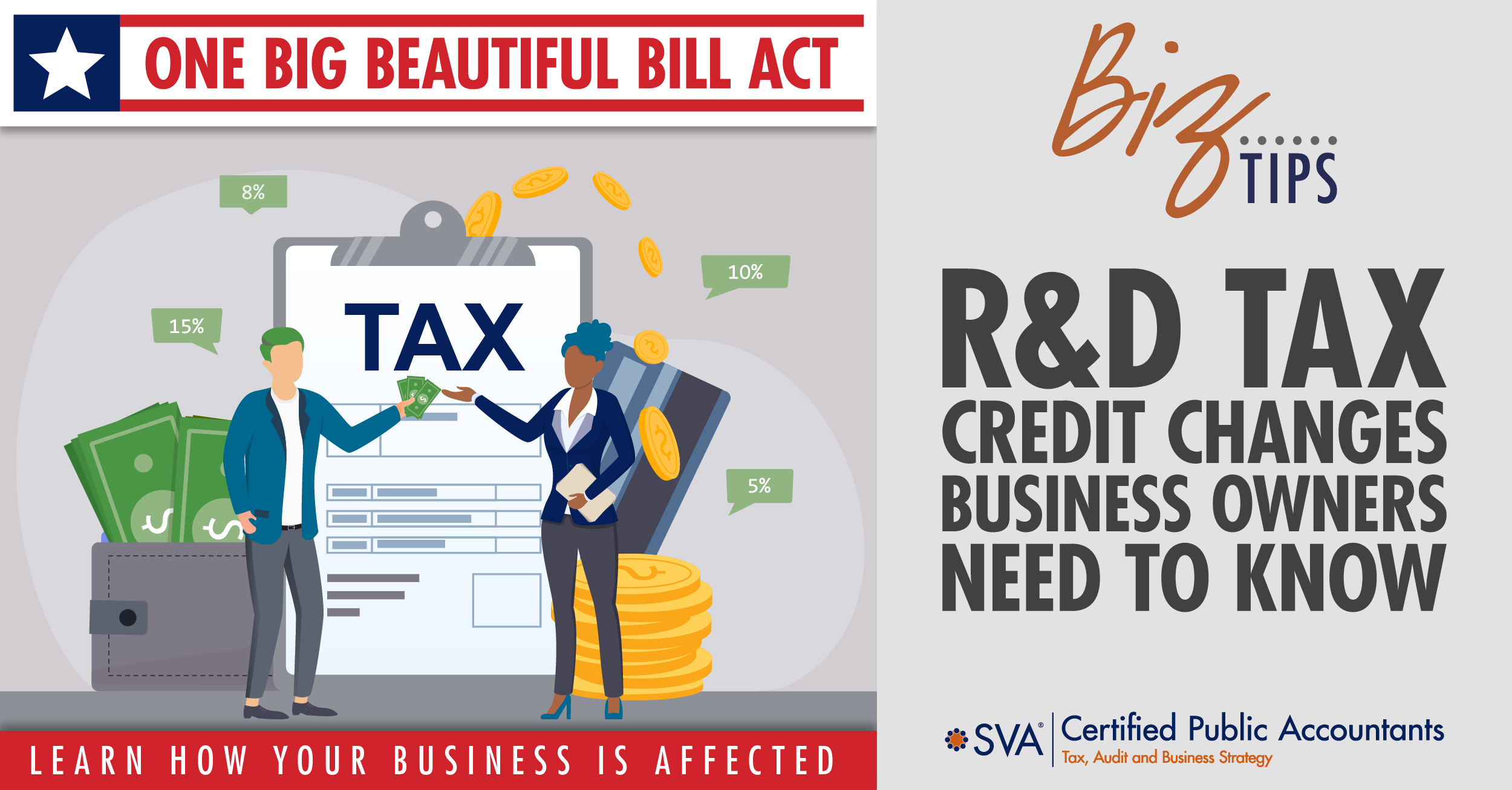| Highlights: |
- Summarizes how the One Big Beautiful Bill tax law restores full immediate deductibility for domestic R&D expenses after years of mandatory amortization.
- Explains how small and large businesses can handle unamortized R&D deductions from 2022–24, including amended returns and timing strategies.
- Clarifies that the R&D tax credit remains a dollar-for-dollar offset and encourages thoughtful tax planning with qualified advisors.
- Notes broad eligibility beyond high-tech firms, covering manufacturers, software developers, and innovators who document experimental activities.
|
The One Big Beautiful Bill makes a long-awaited change to how companies can deduct research and development (R&D) expenses.
How does the bill reset the rules on deductibility, what’s retroactive, and what should you think about before the end of 2025 arrives? Read on to find out.
(Download Video Transcript)
What is the R&D Tax Credit and What Has Changed?
The R&D tax credit has always aimed to encourage U.S. companies to innovate by offsetting the cost of developing new products, services, or processes. If your company spends money solving technical challenges, you might qualify, even if you’re not working in a high-tech lab.
But a change introduced in 2017 caused headaches: starting in 2022, businesses could no longer fully deduct R&D expenses in the year they occurred. Instead, they had to spread those deductions over five years. That rule made things complicated, especially for companies investing heavily in development without corresponding revenue to cover upfront tax bills.
The new bill eliminates that requirement starting in 2025. Businesses can once again fully deduct domestic R&D expenses in the year they occur.
(Download Video Transcript)
What About Past R&D Spending?
Here’s where it gets interesting. The new law offers flexibility for businesses that have been sitting on unamortized R&D deductions from 2022 through 2024.
Smaller companies (under $31 million in revenue) can amend previous returns and potentially claim refunds on taxes paid. Larger companies can choose to deduct the remaining R&D balance in 2025, or spread it across 2025 and 2026.
The best route depends on your specific tax profile and marginal tax rates across those years. Amending may offer immediate cash refunds, but some businesses may benefit more by timing deductions in higher-income future years. There’s no one-size-fits-all answer, and this is where thoughtful tax planning comes in.
Who Qualifies for R&D?
Don’t assume R&D is only for scientists in lab coats. Many manufacturing companies, software developers, engineering firms, and even product designers qualify.
If your business spends time and money developing new methods or experimenting with prototypes (even if it’s just to solve a customer’s request), those activities may count.
The definition hasn’t changed, but businesses that scaled back their R&D claims due to the old amortization rules may want to take another look. You could be leaving money on the table.
What Should Companies Do Now?
If you’ve invested in R&D recently, this is a good time to revisit your documentation and past returns. You may be eligible to reclaim deductions or plan for better timing on deductions going forward.
You’ll also want to work with a tax advisor to evaluate whether you qualify for the credit itself, in addition to the deduction. The credit provides a dollar-for-dollar offset to tax liability and can be a meaningful benefit when layered with other incentives.
For businesses that innovate, the R&D provision in the One Big Beautiful Bill restores a more favorable and straightforward tax environment. It could mean refunds, better deductions, and improved cash flow: all things that support your long-term growth strategy.
© 2025 SVA Certified Public Accountants

